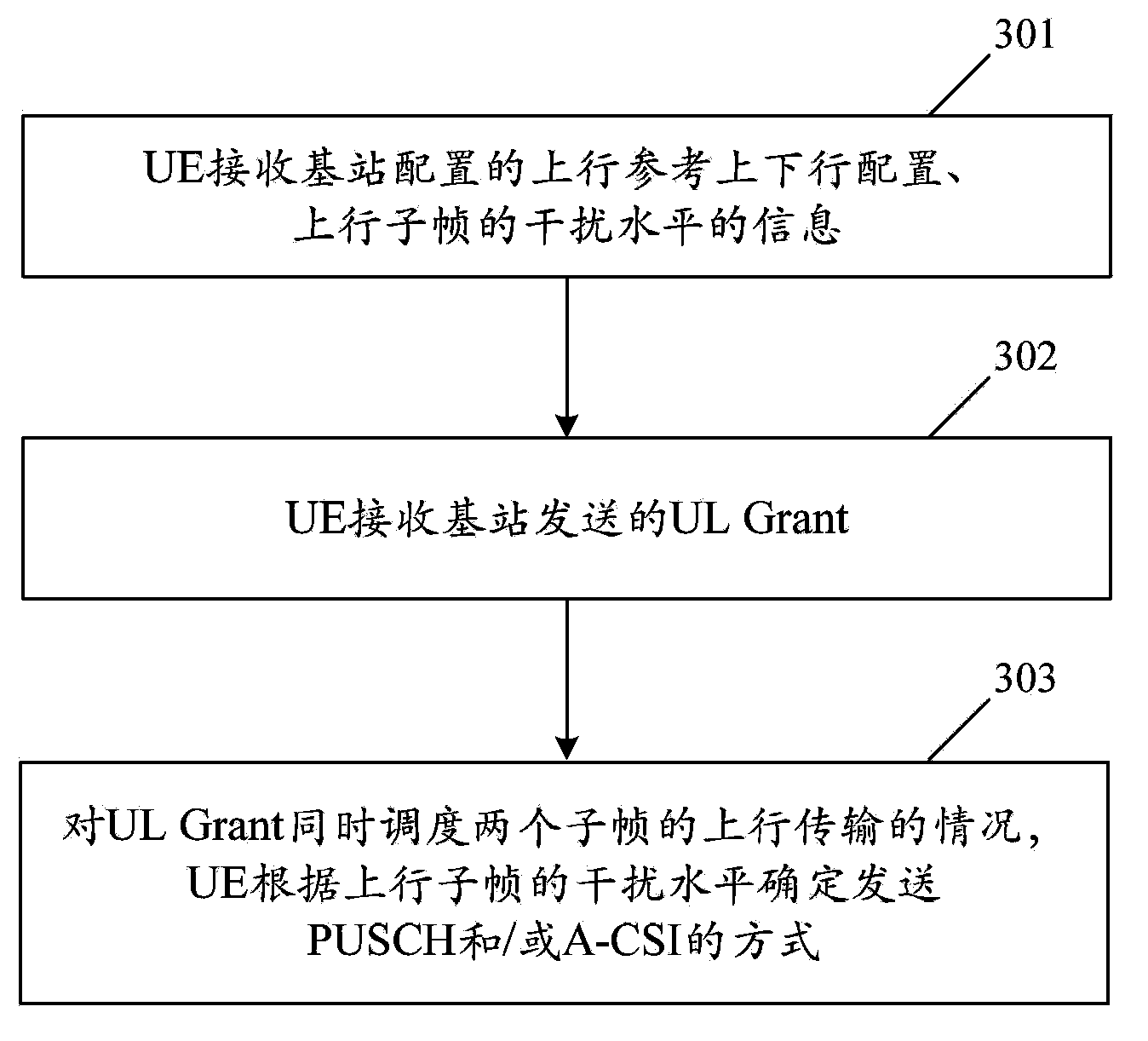Method and equipment for processing uplink transmission
A technology of uplink, downlink and uplink subframes, which is applied in the field of uplink transmission in the LTE system, can solve problems such as waste of resources, and achieve the effect of ensuring effectiveness, ensuring transmission performance, and improving performance
- Summary
- Abstract
- Description
- Claims
- Application Information
AI Technical Summary
Problems solved by technology
Method used
Image
Examples
Embodiment 1
[0049] In a TDD system where the uplink and downlink configurations can change rapidly, the interference level received by each uplink subframe may be different. For example, flexible subframes may be interfered by downlink transmissions of neighboring cells, and the interference level is generally high. By adopting different uplink power control parameters for different uplink subframes, the uplink transmission performance of the flexible subframes interfered by the downlink transmission of neighboring cells can be improved as much as possible.
[0050] For closed-loop uplink power control, uplink subframes can be divided into two or more sets, and power control is performed separately. Taking the division of two subframe sets as an example, it can be divided into a fixed uplink subframe set and a flexible subframe set. The fixed uplink subframe set uses a set of closed-loop power control parameters, and the flexible subframe set uses another set of closed-loop power control ...
Embodiment 2
[0077] According to the above description, in a TDD system in which uplink and downlink configurations can change rapidly, the interference levels received by each uplink subframe may be different. Generally speaking, the uplink subframes subject to greater interference require greater uplink transmit power, which is more likely to reach the limit of the maximum transmit power of the UE and affect link performance; in addition, usually, the uplink subframes subject to greater interference The range of interference fluctuations is also relatively large, and the performance of using closed-loop power control to compensate for power changes is poor.
[0078] according to the above figure 2 In the analysis of , when the uplink reference uplink and downlink configuration 0 is adopted, when one UL Grant simultaneously schedules uplink transmission of two uplink subframes, the interference conditions of the two uplink subframes are generally different. In the existing LTE system, w...
Embodiment 3
[0102] In the existing LTE system, the base station can control the method of processing the HARQ-ACK information when the UE feeds back the HARQ-ACK on the PUSCH by setting the downlink allocation index (UL DAI) in the UL Grant. Specifically, the UL DAI is a value based on which the UE can calculate the number of bits of HARQ-ACK information that needs to be fed back on the PUSCH resource. However, for the case where the uplink reference uplink and downlink configuration 0 is used, the uplink index (UL index) is sent in the UL Grant without the UL DAI, which causes the UE to determine the number of bits of the HARQ-ACK information only according to the maximum binding window, resulting in Waste of resources.
[0103] according to the above figure 2 In the analysis of , when the uplink reference uplink and downlink configuration 0 is adopted, when one UL Grant simultaneously schedules uplink transmission of two uplink subframes, the interference conditions of the two uplink ...
PUM
 Login to View More
Login to View More Abstract
Description
Claims
Application Information
 Login to View More
Login to View More - R&D
- Intellectual Property
- Life Sciences
- Materials
- Tech Scout
- Unparalleled Data Quality
- Higher Quality Content
- 60% Fewer Hallucinations
Browse by: Latest US Patents, China's latest patents, Technical Efficacy Thesaurus, Application Domain, Technology Topic, Popular Technical Reports.
© 2025 PatSnap. All rights reserved.Legal|Privacy policy|Modern Slavery Act Transparency Statement|Sitemap|About US| Contact US: help@patsnap.com



